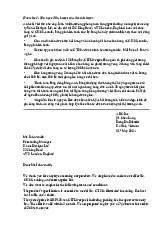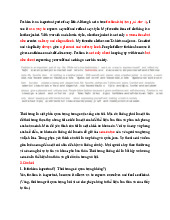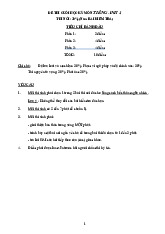

Preview text:
lOMoAR cPSD| 47207194
"The Paradox of Innovation in Ancient Civilizations"
Innovation is often regarded as a hallmark of modernity—a relentless drive toward progress,
efficiency, and novelty. Yet ancient civilizations, from Mesopotamia to the Indus Valley, were
themselves hotbeds of technological and intellectual advancement. The paradox lies in the fact
that while these societies developed sophisticated systems—such as irrigation networks, written
language, and urban planning—they often exhibited long periods of technological stasis, where
innovation plateaued or even regressed. This phenomenon has puzzled historians and
archaeologists, prompting a reevaluation of how innovation is defined and understood across
temporal and cultural contexts.
One explanation for this paradox is that ancient innovation was primarily utilitarian and
contextspecific. Unlike modern societies, which often pursue innovation for its own sake or for
marketdriven incentives, ancient cultures tended to innovate in response to immediate
environmental or social pressures. For instance, the development of cuneiform in Sumer was not
a quest for abstract literacy but a practical solution for record-keeping in complex trade
economies. Once these innovations fulfilled their purpose, further advancement was not always
deemed necessary or desirable.
Moreover, the social structures of ancient civilizations often inhibited the diffusion of new ideas.
Hierarchical governance, rigid class systems, and religious orthodoxy could suppress
experimentation and limit the spread of novel technologies. In Egypt, for example, the
centralized control of knowledge by priestly elites meant that architectural and mathematical
innovations were tightly regulated, often confined to sacred or state-sponsored projects. This
contrasts sharply with the decentralized, competitive nature of modern innovation ecosystems,
where ideas proliferate rapidly across borders and disciplines.
Another factor contributing to technological stagnation was the absence of a formalized scientific
method. While ancient thinkers made remarkable observations—such as Babylonian astronomers
charting celestial movements or Chinese engineers constructing complex water clocks—their
approaches lacked systematic experimentation and falsifiability. Knowledge was often
transmitted through oral tradition or inscribed in symbolic language, making it resistant to
revision or critique. As a result, errors could persist for generations, and breakthroughs were
sporadic rather than cumulative.
However, it would be a mistake to view ancient innovation as inferior or primitive. In many
cases, these civilizations achieved feats that remain awe-inspiring even by contemporary
standards. The precision of Incan stonework, the hydraulic engineering of Roman aqueducts, and
the astronomical alignment of Mayan temples all testify to a deep, contextually embedded
intelligence. What modern observers interpret as stagnation may, in fact, reflect a different
philosophy of progress—one that values stability, sustainability, and harmony over disruption and acceleration.
In reassessing ancient innovation, scholars are beginning to adopt more nuanced frameworks that
account for cultural values, environmental constraints, and epistemological diversity. Innovation,
in this broader sense, is not merely the invention of new tools but the cultivation of adaptive lOMoAR cPSD| 47207194
wisdom. Ancient civilizations may not have pursued innovation as aggressively as modern ones,
but they often achieved a balance between technological advancement and societal cohesion that remains instructive today.



